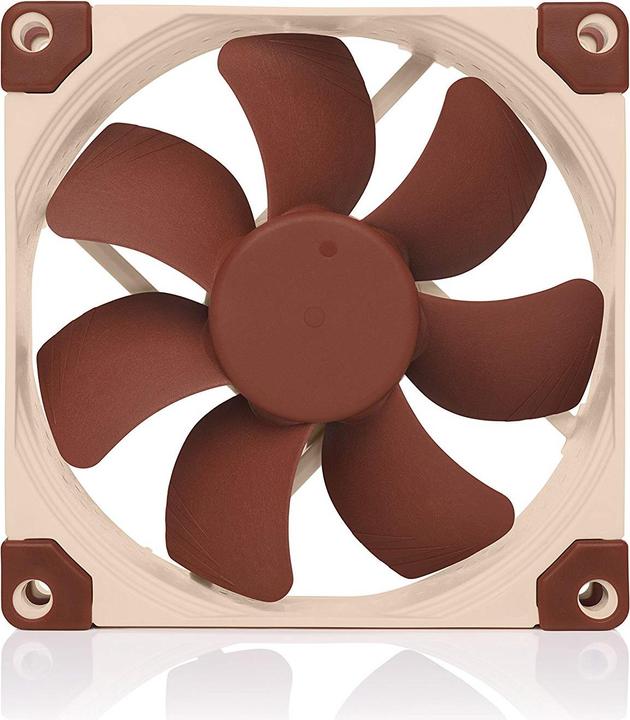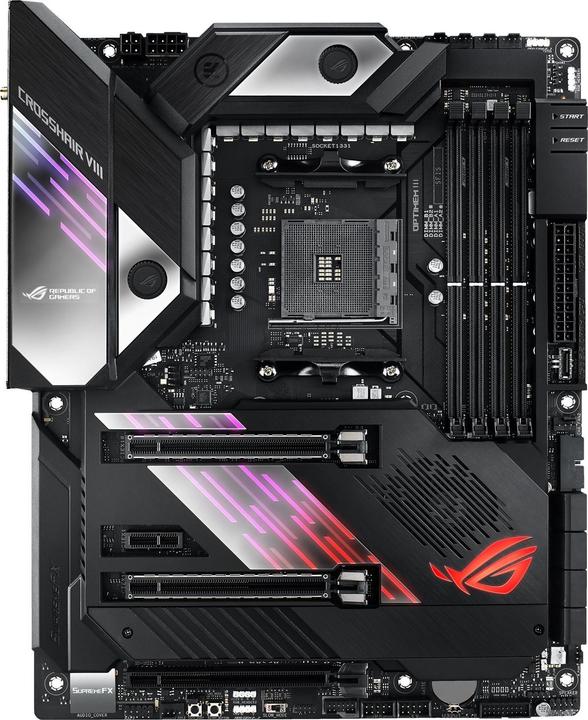

Noctua NH-L9a fan mod: What are the benefits of replacing the fan?
CPU coolers are available in various sizes and shapes. The rule of thumb is: the bigger the cooler, the better the cooling performance. Can a small heat sink be improved with a larger fan?
CPU coolers are one of those things: some swear by air cooling, others by water cooling. Those who are less dogmatic opt for an all-in-one solution. And then there are those who don't have much choice due to the limited space available: Mini-ITX cases often only fit a top-down cooler, which directs fresh air onto the fins of the cooling element from above.
I recently compared just such top-down-coolers. User HipFireSoldier notes:

I like such tests and immediately get the two fans mentioned. I also take the A12×25 PWM from Noctua. So for the comparison, I have two fans with a diameter of 92 millimetres and a height of 14 and 25 millimetres respectively, and two fans with a diameter of 120 millimetres and a thickness of 15 and 25 millimetres respectively. The adapter from J-Hack is also available from the company free of charge as an STL file. With my 3D printer, I can print the bracket out of nylon myself.

The fans and their specs
The table shows an overview of the exact differences between the fans:
| Fan | Dimensions | RPM | dB/A | m3/h | mm H20 |
|---|---|---|---|---|---|
| NF-A12x25 PWM | 120×120×25 | 2000 | 22,6 | 102,1 | 2,34 |
| NF-A12x15 PWM | 120×120×15 | 1850 | 23,9 | 94,2 | 2,07 |
| NF-A9 PWM | 92×92×25 | 2000 | 22,8 | 78,9 | 2,28 |
| NF-A9x14 PWM | 92×92×14 | 2200 | 19,9 | 50,5 | 1,64 |
For explanation: RPM stands for the maximum number of revolutions per minute. dB/A refers to the sound level produced by the fans. A low level is better, as noise emissions have a disturbing effect. m3/h refers to the volume flow, i.e. how much air is transported through the fans per hour. mm H20 stands for millimetres of water column and describes how much pressure the fans generate. A higher value is better for the volume flow and the millimetre water column.
According to the specifications, the NF-A9x14 PWM, the original fan of the NH-L9a CPU cooler, should be the worst performer by far.
The test scenario
As with the top-down cooler comparison, I conduct the test on our testbench. Fans behave differently in every case. On the test bench, all fans have the same conditions and I can see how they behave under optimum conditions. I use the following additional components for the test:
Of course, the test CPU exceeds the cooling capacity of the NH-L9a. Nevertheless, the test makes sense: thanks to the powerful CPU, the differences in cooling performance are more clearly visible than with a weaker CPU.
To test the cooling performance, I run the HeavyLoad stress test for 20 minutes. The programme loads all of the CPU's cores to 100 per cent. I use HWiNFO64 to record the temperatures of the CPU, mainboard, chipset, RAM and SSD as well as the CPU clock frequencies. If you're wondering why I'm leaving out the VRM: The mainboard in the tested setup doesn't have a sensor there. I leave the fans set to standard in the BIOS. This means they turn up fully from 70° Celsius on the CPU. During the tests, it was around 25° Celsius in my office.
The results
The fan size has no influence on the maximum temperature. In all four tests, the Ryzen 9 3900X shows the maximum temperature of 95° Celsius in the graphics after two minutes and thus the thermal limit.

After only two minutes? I take a closer look at the history. The CPU reaches 95° Celsius after just 15 seconds with the two 92-millimetre fans. With the two 120-millimetre fans, it takes eight seconds longer. A Ryzen 9 3900X is definitely overkill for an NH-L9a.

The clock frequencies show that the largest fan is the most efficient. The clock here never falls below 3693.3 MHz. With the three other fans, the clock frequency after 20 minutes is 3618.5 MHz each. The result of the smallest fan is astonishing. It can keep up with the two larger ones and even beats its thicker, 92 millimetre diameter brother. It keeps the clock rate at a higher level for longer.

The advantage of larger fans is clearer for the other components. The difference is particularly clear for RAM and the chipset, with a maximum of 8.5° and 6.7° Celsius respectively. But the mainboard and SSD also benefit with up to 3° and 4° Celsius respectively.
Conclusion on the fan upgrade: Why not!
Even if the difference isn't huge: If you have access to a 3D printer, a fan upgrade like this can be worthwhile. Depending on the case and CPU, you may get even more out of it than I did. With smaller CPUs such as a Ryzen 5 3600X or an i5-10600K, you can probably even achieve lower CPU temperatures. However, you would have to test this in each case.
If you don't have access to a 3D printer, it's hardly worth changing the fan. With the NF-A9 PWM, which fits on the heat sink without a bracket, the difference to the original fan, the NF-A9x14 PWM, is too small. <p
From big data to big brother, Cyborgs to Sci-Fi. All aspects of technology and society fascinate me.













